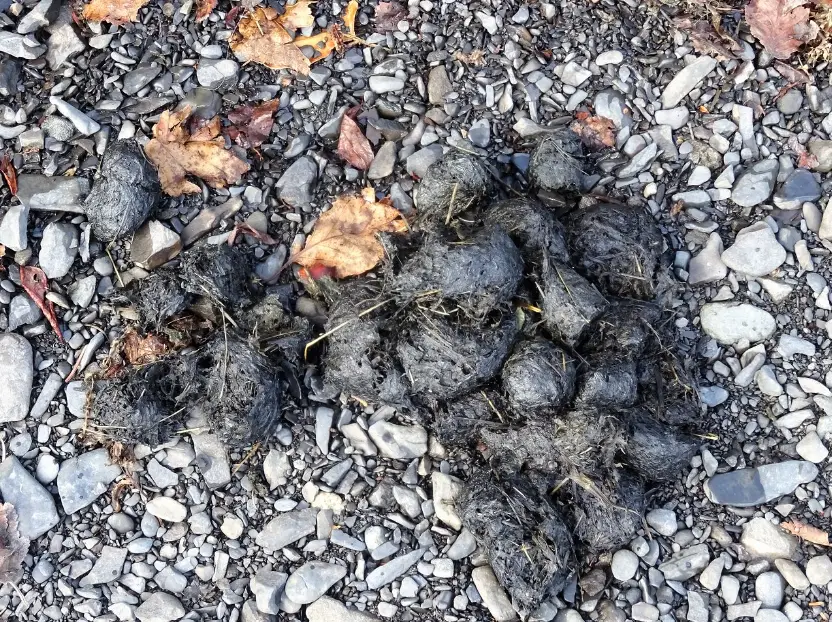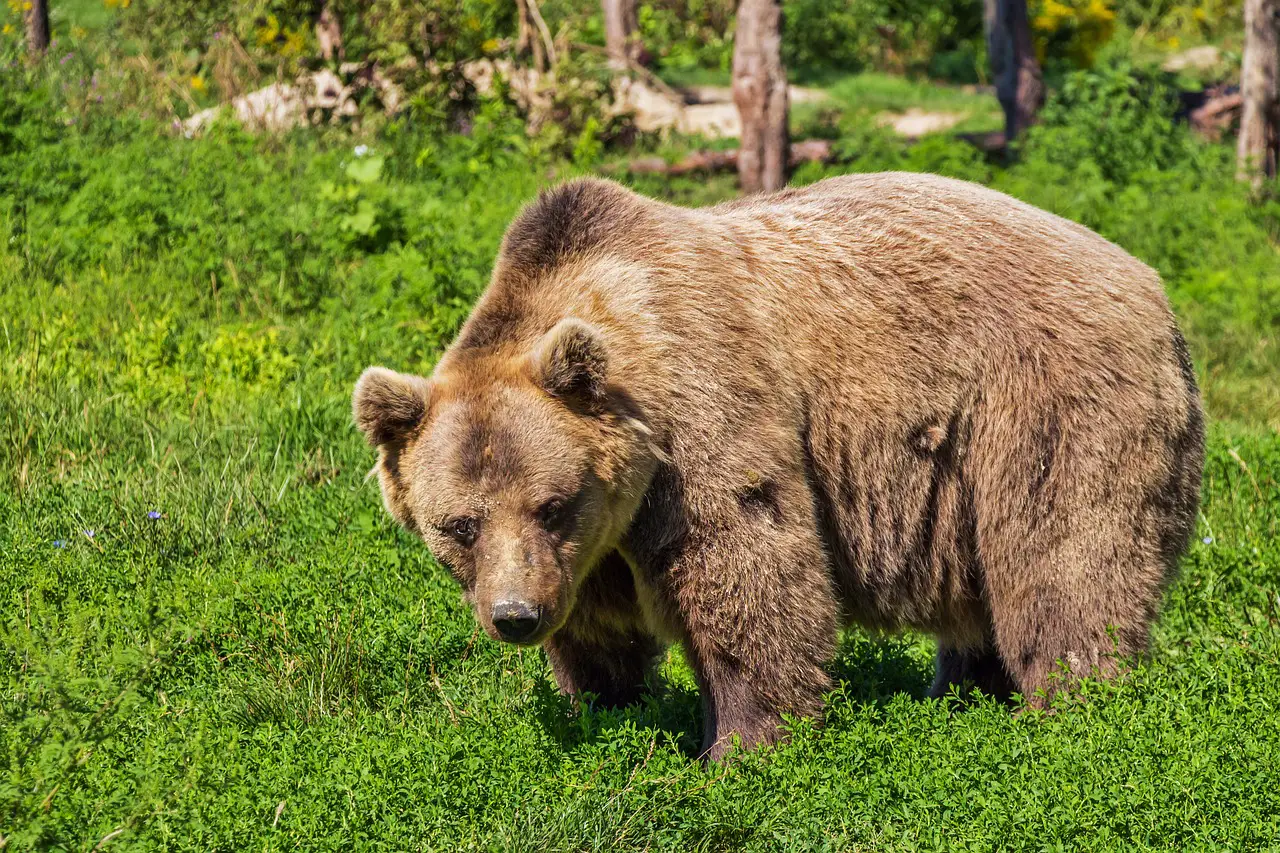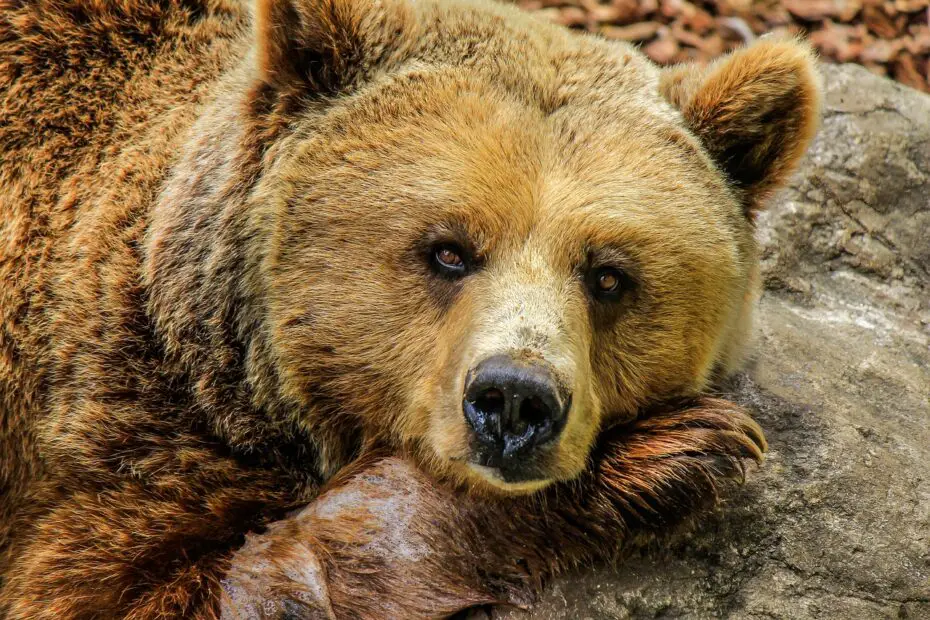What Does Bear Poop Look Like? Bear poop, also known as bear scat, is a fascinating aspect of the natural world. By understanding the appearance and characteristics of bear poop, we can gain insights into the diet, health, and behavior of these magnificent creatures. In this article, we will explore what bear poop looks like, factors that affect its appearance, and the significance of identifying bear scat.
You may also want to read about grizzly bear vs polar bear.
Bear Diet and Digestive System
To comprehend the appearance of bear poop, it’s essential to consider the diet and digestive system of bears.
Bears are omnivorous animals, meaning they consume both plant matter and animal protein. Their diet typically consists of fruits, berries, nuts, vegetation, insects, and occasionally small mammals or fish. This varied diet influences the composition of their scat.
Composition of Bear Poop
Bear poop exhibits distinct characteristics that can provide valuable information about the animal that produced it.

Size and Shape
The size and shape of bear scat can vary depending on the bear species, age, and the amount of food consumed. Generally, it is cylindrical in shape and can range from 1 to 2 inches (2.5 to 5 centimeters) in diameter. The length of bear poop can vary from a few inches to several inches, depending on the bear’s size and diet.
Color and Texture
The color and texture of bear scat are influenced by the bear’s diet. Fresh bear poop often has a dark brown to black color, resembling that of rich soil. However, the color can change depending on the types of food consumed. For example, if a bear consumes berries, the scat may have a reddish tint.
In terms of texture, bear poop tends to be segmented and can appear loosely formed. It may contain remnants of food such as seeds, fur, bones, or plant fibers. The texture can range from relatively solid to more loose and moist, depending on the bear’s hydration levels and diet.
Factors Affecting Bear Poop
Several factors can influence the appearance of bear scat.
Diet
The diet of a bear plays a significant role in determining the composition and characteristics of its poop. Bears with a diet rich in berries or fruits may produce scat with visible seeds or remnants of plant matter. On the other hand, bears that primarily consume meat may have scat containing fur, bones, or undigested animal parts.
Health and Hydration
The health and hydration of a bear can affect the consistency and appearance of its scat. Bears that are well-hydrated typically have more solid and well-formed scat. Conversely, bears that are dehydrated may have looser and less-formed scat.

Identifying Bear Poop
What Does Bear Poop Look Like? Identifying bear poop can be helpful for tracking bear populations and understanding their presence in an area. However, it is crucial to exercise caution and maintain a safe distance when encountering bear scat.
To identify bear poop, look for the characteristic cylindrical shape and dark brown to black color. It may also have visible remnants of food, such as seeds or fur. Be cautious of the size, as larger scat may indicate a larger bear.
Significance of Bear Poop
Bear poop serves various ecological purposes. It contributes to nutrient cycling and aids in seed dispersal, as undigested seeds pass through the digestive system and are deposited elsewhere. Bear scat also serves as a visual indicator of bear activity and territory.
Conclusion
What Does Bear Poop Look Like? Understanding what bear poop looks like can provide valuable insights into the diet, health, and behavior of bears. By observing the size, shape, color, and texture of bear scat, we can gain a deeper appreciation for these remarkable creatures and their role in the ecosystem.
FAQs
1. Is bear poop dangerous? Bear poop itself is not inherently dangerous, but it is essential to exercise caution and avoid close contact with it, as bears can carry diseases.
2. Can you tell the species of bear from its scat? It is challenging to determine the species of bear solely based on its scat. Other factors such as location and habitat can provide more accurate identification.
3. How long does bear scat take to decompose? The decomposition rate of bear scat varies depending on environmental conditions. In favorable conditions, it can take several weeks to months for bear scat to decompose fully.
4. Can you find valuable items in bear scat? Occasionally, bear scat may contain remnants of undigested items such as jewelry or non-food objects that bears may have ingested. However, such finds are rare.
5. Should I report bear scat sightings? If you encounter bear scat in an area where it is uncommon or suspect there may be increased bear activity, it is advisable to report your sighting to local wildlife authorities for monitoring purposes.
